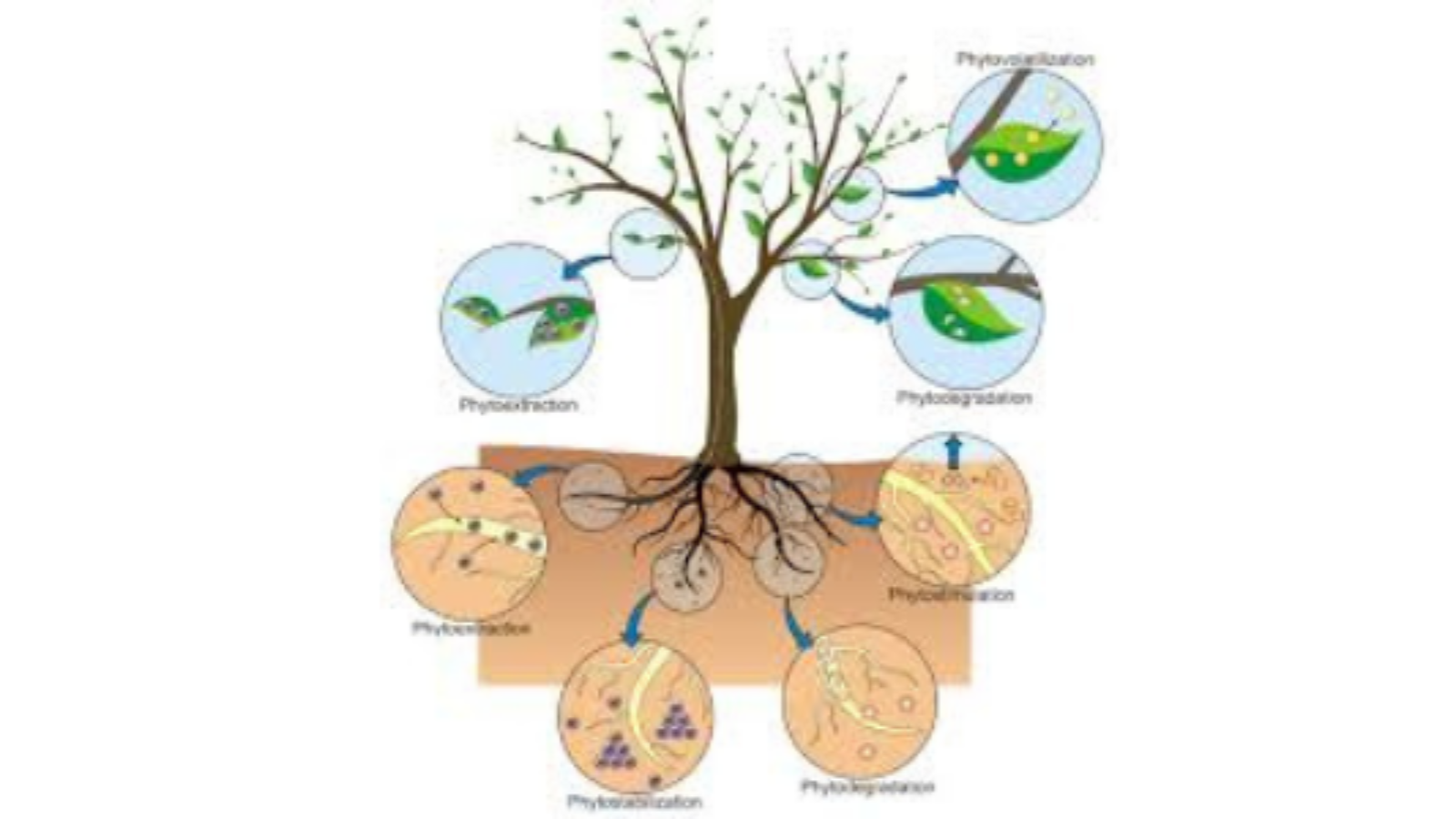Phytoremediation
In natural ecosystems, plants act as filters and metabolize substances generated by nature. In Phytoremediation plants are used to remove contaminants from soil and water. There are three major types of Phytoremediation techniques, Classified based on the action: Phytoextraction, Phytotransformation and phytostabilization.
Phytoextraction (or phytoaccumulation) :-is the process used by the plants to accumulate contaminants (most usually heavy metals) into the roots and above ground plants parts; currently this process is mainly used for extracting heavy metals and phytomining involves extracting metals from soil by harvesting specially selected hyperaccumulating plants .
Phytostabilization (Or phytoimmobilization):-is a technique in which plants reduce the mobility and migration of contaminants and contaminated soil. Leachable are adsorbed and bound into the plants structure so that they form a stable mass of plants from which the contaminants will not re-enter the environment .
Phytotransformation (or Phytodegradation):-Refers to the metabolization and degradation of organic contaminants taken up by plants from soil or less commonly, the breakdown of contaminants outside the plants by enzymes secreted by plants. When Phytodegradation occurs within the plants, contaminant uptake is dependent on both, the properties of the contaminants including hydrophobicity, solubility and polarity and the characteristics of plants.
By -ASSISTANT PROFESSOR Deepa Chand
DEPARTMENT :B.Ed
UCBMSH Magazine – (YouthRainBow)
UCBMSH WEBSITE – Uttaranchal (P.G.) College Of Bio-Medical Sciences & Hospital
UCBMSH B.ED WEBSITE – Uttaranchal College of Education
UCBMSH NURSING WEBSITE – College Of Nursing UCBMSH
REGISTRATION – Apply Online
For any queries & Admission Call at:8192007206, 8192007210, Or mail us at: admission@ucbmsh.org

Add a Comment